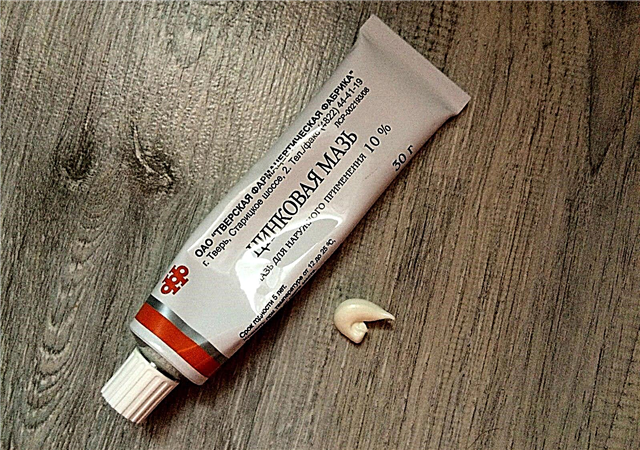
Sour cream is a favorite product of many adults and appears on the table of our compatriots quite often. It is added to baked goods, served with cheese cakes and other dishes, and even eaten separately. And when there is a baby in the family who goes to the common table, the mother is interested in how many months it is permissible to give sour cream to the children, what is useful and not harmful to such a product, as well as in what quantity and how often it can be treated to the kids.

Benefit
- The composition of such a dairy product contains proteins, which are easily absorbed and provide the child's body with valuable amino acids.
- Sour cream contains fatty acids and carbohydrates, providing the child's body with energy.
- It contains many vitamins, among which there are E, B6, D, B12, niacin, B2, folic acid, H, choline, B1 and others.
- From her, the child will receive calcium, iodine, molybdenum, phosphorus, iron, selenium, zinc, copper, sulfur, sodium and many other elements.
- The lactose in the composition is important for the absorption of calcium and is used lactobacilli, therefore, maintains the microflora of the gastrointestinal tract normal.
- Its use prevents putrefactive and fermentative processes inside the baby's intestines, stimulating its regular emptying.
Watch the video in which the pediatrician Smirnova L.A. talks about when you can start introducing sour cream and cheese into the diet:
Harm
- Some children are allergic to lactose and other substances in the composition.
- Due to the presence of saturated fat, such a product is not recommended in early childhood, as it will be difficult to digest. Even if you give the baby high-quality sour cream, but at the same time it will be with a high percentage of fats, there is a high probability of nausea, colic, and diarrhea.
- Fatty sour cream can provoke metabolic disorders, as well as problems in the functioning of the endocrine glands, gallbladder and liver.
- Excessive use threatens overweight and diseases of the cardiovascular system.
- The store product may contain ingredients that are harmful to children's health.
- Stale sour cream can cause intestinal infections. If the baby has eaten an expired product, he may have symptoms such as vomiting, thinned frequent stools, painful abdominal cramps. If they appear, you should immediately call a doctor.

Features of the introduction to complementary foods
At what age to give?
Most pediatricians advise against giving such a dairy product to either infants or a one-year-old child. According to doctors, a child's body cannot cope with the digestion of even the most low-fat sour cream in a year.
Sour cream should be introduced into the children's diet no earlier than 2 years of age... If the child has a tendency to allergic reactions, it is advised to postpone the acquaintance until 3 years. Up to 2-3 years of age, it can be replaced with low-fat yogurt, as well as low-fat cream for baby food.

At 2-2.5 years old, sour cream in the child's menu should be low-fat (10%), and at the age of 2.5 to 3.5 years, the baby is given low-fat sour cream (up to 15%). It is advised to start giving a product with a fat content of 15 to 25% not earlier than 3 and a half years, and more fatty species should not be given to children at all.
How often and how much to give?
Sour cream in childhood is recommended to be included in the menu no more than two to three times a week. To begin with, you should limit yourself to a teaspoon of such a dairy product at one time. But you should not rush to increase a single dose, because this product, although useful, is high in calories.
What to cook?
Sour cream is often added to curd dishes for a child, for example, they stir curd with it or pour a small amount of casserole or cheesecakes. Also, sour cream can be added to cereals and soups. Besides, this dairy product is often an ingredient in vegetable or fruit salads. It is also added to boiled, stewed or baked vegetables, for example, they prepare zucchini for a child, stewed in it.

No less often it is included in meat dishes, for example, a child is offered meatballs in sour cream sauce. Turkey or chicken cooked in such a sauce will be soft and tender. Stewed rabbit in sour cream is no less tasty. Sour cream sauce complements fish dishes well.
See how you can make delicious sour cream cookies for crumbs:
How to choose for a child?
- You should not take sour cream for children in the market, after all, it will not only be too oily, but can also be dangerous due to possible non-compliance with sanitary standards.
- When buying a product for baby food, you first need to look at its composition. Children should only receive a natural product, therefore the label should not contain any preservatives or stabilizers. vegetable fats and other additives.
- Buy sour cream for children with a minimum shelf life - no more than 5-7 days.
- The consistency of the product will be determined by the fat content and the manufacturing method. Sour cream with 10% fat is quite liquid and similar to kefir, while a product with a fat content of 15% and higher has a denser consistency.
- Take a close look at the sour cream by opening the jar. If it is clotted or liquid has separated from the bulk of the product, it is not recommended to give it to children. Also dispose of it immediately if there is an unpleasant odor or mold.
How to cook at home?
Mothers who have learned how to make cottage cheese from milk for babies are also thinking about making sour cream on their own. It's quite easy to do this if you have baby cream and a special starter culture. Having mixed these two components at room temperature, you need to wait for the cream to sour, and then leave them in the cold for 1-2 days. You can also ferment the cream in a yogurt maker.

For more information about the use of fermented milk products, see the program "Living Healthy".
Find out if your child's weight is normal using the following calculator.



